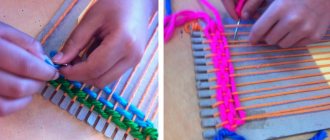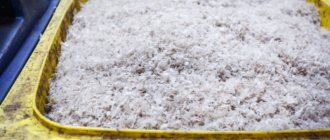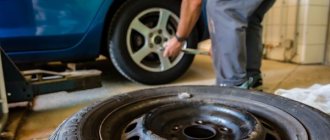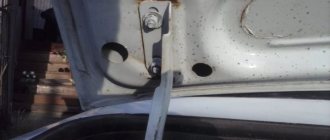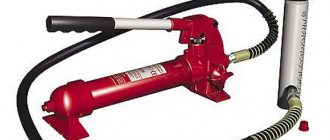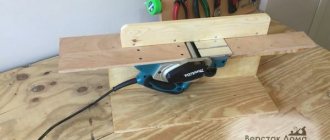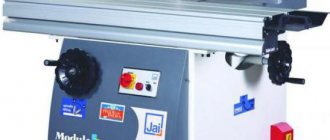I understand that I’m not the first and I’m not the last to create my own vacuum forming machine, but I still want to share with you an article about it.
The design for do-it-yourself vacuum forming is standard: a wooden frame to hold the material that is being shaped, and a wooden box with holes in the lid on top to act as a vacuum chamber. The most inexpensive option.
Assembling a vacuum press with your own hands: what the device is and what are the stages of its assembly
The material will be devoted to how to make a vacuum press with your own hands, and what is required for this.
Remember that such work is quite complex, you need to follow safety rules , because it involves the use of high-risk power tools and heavy structures. If you want to assemble a press with your own hands, evaluate your capabilities, and if this is difficult for you, it is better to entrust this task to a professional.
Vacuum press: purpose and principle of operation
Film furniture facades are widely used in the manufacture of cabinet or upholstered furniture due to the following characteristics:
- wide range of colors;
- variety of forms;
- affordable price.
Such facades are manufactured using special equipment , with the main production tool being a vacuum press. He places a PVC film on the surface of an MDF-based workpiece.
The press includes the following key elements:
- vacuum chamber or table;
- thermal module
The chamber most often has a rectangular shape and is made of a rigid material that does not compress under artificially created negative pressure from the inside. And on the outside, a PVC film is laid, the edges of which are sealed with the frame.
The film shrinking process includes the following steps:
- laying workpieces on the table;
- sealing;
- heating the films;
- air pumping;
- cooling;
- cutting out blanks and removing excess film from the facade.
Do-it-yourself vacuum press: what do you need to know?
Before working on making your own vacuum press, remember the following:
- 5 years after assembly, the device must be upgraded or purchased a new one;
- possible malfunctions are eliminated only within a certain period of time;
- the device has only manual control;
- Available and common materials are used for work;
- do not chase a beautiful design of the structure;
- speed and convenience should be no worse than factory analogues.
If you plan the purchase of components and carry out the work correctly, the cost of a press made by yourself will be significantly lower than its factory counterpart, and you will be able to make film facades and MDF overlays at home.
Manufacturing a bed for a vacuum press
Before you start making a frame for a press, you need to choose the optimal type of heating unit , since this will affect not only the design of the frame, but also other elements of the press. When assembling it yourself, it is best to choose a retractable thermal module, which is easy to assemble and convenient to use, but it has large dimensions.
To make the frame you will need:
- steel profiled pipe;
- rails for thermal module.
The design of the bed is best simulated on a computer using special 3D modeling programs.
To work you will need the following set of tools:
- small one-handed angle grinder with a disc diameter of 115 or 125 mm;
- welding machine;
- electric drill;
- locksmith kit, including hammer, wrench, pencil, tape measure, etc.
How to make a lifting, pressing, top frame
We use a 60x40x2 mm profile pipe as the frame material. The clamping frame is made exactly in the same dimensions as the vacuum frame. If it was not possible to get an even profile - not bent or twisted, then we select the straightest sheets in pairs. From these we will make parts of the vacuum table that fit tightly together.
The lifting of the clamping frame will be carried out through adjustable hinge joints. The hinges can be adjusted when a seal is glued in the form of strips of sheet rubber with medium hardness - approximately 2 mm thick.
Welded washers are required to increase the friction area. The hinge pin is in the form of a steel rod D12, the ends of which have threads.
To keep the pressure frame raised, we can use gas elevators.
Main varieties
Today, two types of vacuum presses are produced:
- conventional type equipment (such presses are used in cases where it is necessary to exert the most gentle influence on the workpiece, and are capable of creating pressure the value of which does not exceed 0.95 kg/cm 2
); - high-pressure vacuum presses (equipment of this type is capable of providing pressure up to 8.5 kg/cm2
).
In a conventional press, the facing material is pressed against the part by atmospheric pressure, and in a press with excess pressure, compressed air is additionally pumped into the cavity above the workpiece
Equipment of the first type is used in cases where it is necessary to cover products with a simple configuration with PVC film or veneer. Vacuum presses capable of creating high pressure are used for veneering or covering with PVC film parts of complex shapes. In addition, such equipment is often used as a vacuum molder, with the help of which three-dimensional products of various configurations are made from sheet plastic.
The most common two layout options for vacuum presses are:
Other Applications
In addition to gluing the surface of furniture structural elements with veneer and PVC film, a membrane vacuum press (MVP) can be successfully used to solve other problems, which, in particular, include:
To transfer images from special paper to almost any (including embossed) surfaces using the sublimation method, equipment such as a thermal vacuum press is used. Using a thermal vacuum membrane press, you can apply inscriptions and images to products made from ceramics, plastic, textiles and other materials.
Tabletop membrane-vacuum press
The principle on which a membrane vacuum heat press works is as follows.
Vacuum heat presses, presented on the modern market with a wide variety of models, are actively used by both large printing enterprises and small companies engaged in the production of souvenirs.
Vacuum press for plastic molding
A vacuum molding press is used to produce relief-shaped products from sheet plastic. Using such a molding machine, which operates on the principle of a membrane-vacuum press, three-dimensional products can be made from flat plastic sheets, the depth of depressions or convexities on the surface of which reaches up to 500 mm. The housings of vacuum presses of this type, as a rule, are designed for fairly large products, which makes it possible to produce a wide range of products using such equipment.
Modern models of vacuum molding presses, equipped with CNC systems, have the option of simultaneously heating different areas of the workpiece to different temperatures. This makes it possible to produce volumetric products with rather complex relief from sheet plastic. The entire processing process on such equipment is controlled and controlled by a CNC system. Thus, do-it-yourself vacuum forming is not performed when using this equipment; the machine operator only sets the program, and the machine does the rest.
Press device
Let's look at the design of a vacuum press using the example of the Master Compact model, which is very popular today. It consists of:
- Heating system. Special lamps are used as heating elements, the type of which differs depending on the scale of production. High-quality heaters provide heating to the required temperature in 2 minutes;
- Desktop. The design of this element allows for cladding for flat or, conversely, radius elements, the height of which can be 300 mm or more. As a rule, tables are made of high-quality aluminum, the thickness of which is at least 6 mm. The table should provide convenient access to the workpiece from all four sides;
- Lifting systems. As a rule, this is a spring-lever mechanism of the thermal module, which is capable of compensating for the weight of the so-called heating cap itself. In this case, when unloading and loading workpieces, the operator does not need to spend a lot of effort;
- Thermomodule. This is a closed device that must protect the workpiece from any environmental influences and changes in temperature or pressure level. Otherwise, it may affect the quality of the future product. Often thermal modules are equipped with viewing windows, allowing the operator to control the entire process of applying film to a wooden workpiece;
- Vacuum pump. The Master Compact press is equipped with a German Busch pump, which has a capacity of 40 m3/h. However, the system can also use other vacuum pumps, each of which differs in its operating principle and characteristics of the pressure created inside the working chamber;
- Control systems. It is a control panel that can switch to manual or automatic mode. For example, the Master Compact system uses a three-phase inverter power controller, which allows you to smoothly change heating rates. This is a very useful option, as it ensures that the object is not deformed due to heating of the film at different intensities. The control system is also responsible for monitoring the heating element in case it fails or begins to malfunction;
- Membranes. Most often used when processing so-called breathable materials. It presses the film and allows you to cover even complex, bent furniture elements with film;
- Pin systems. Thanks to the presence of such a module, there is no need to prepare supports for the workpiece. This significantly speeds up the work process and simplifies the operator’s task. However, such systems are not installed in all vacuum presses, so before purchasing you need to check the availability of this module or order it additionally if the design involves integration;
- Mobile stand. It is very convenient for rolls of film material. In the Master Compact model, such a rack allows you to install 6 rolls at once, after which the press automatically begins to use them one by one. This also speeds up and simplifies the processing process;
- Knife. Typically, presses are equipped with specialized knives for removing excess film after processing;
